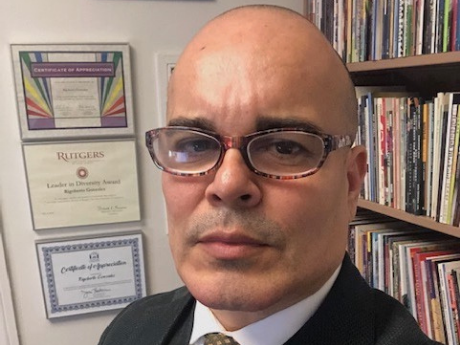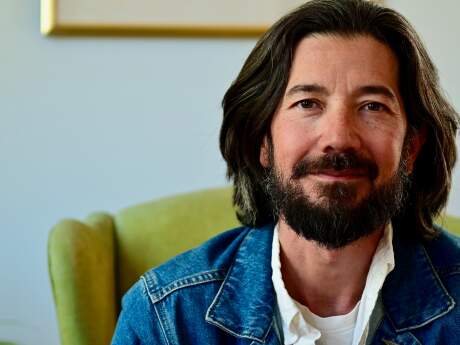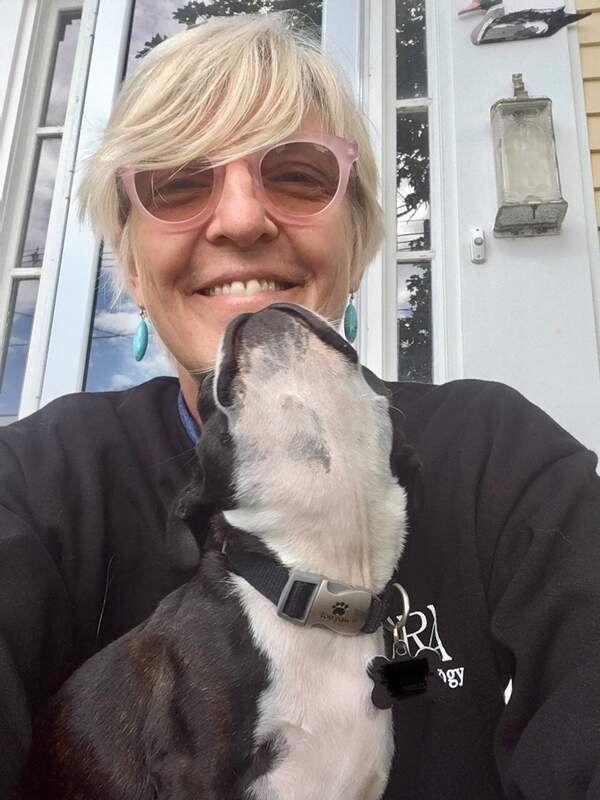Stopping By
Stopping by with Rigoberto González

During this extraordinary moment in time, we asked writers, musicians, curators, and innovators to reflect on influence, memory, language, shared spaces, and the power of poetry to bring us together.
Rigoberto González is Distinguished Professor of English and the director of the MFA Program in Creative Writing at Rutgers-Newark, the State University of New Jersey. He is the author of 17 books and recipient of fellowships from the NEA, United States Artists, Guggenheim, and Lannan foundations.
What is the last thing that moved you?
I read multiple books at once. A few favorite reads this summer: Junichiro Tanizaki’s Devils in Daylight (translated by J. Keith Vincent), a short novel about two men who set out to discover the story behind a brutal incident they witnessed; Kirstin Valdez Quade’s novel The Five Wounds, about a dysfunctional family in present-day New Mexico attempting to mend relationships as each tries to navigate their individual life-changing events; Kevin Simmond’s illuminating collection The Monster I Am Today: Leontyne Price and a Life in Verse(full disclosure: I reviewed it and loved it); and Denise Duhamel’s Second Story, a poem in terza rima that chronicles the story of a home damaged by a hurricane. I also enjoyed watching a touching documentary about Amy Tan’s journey, Unintended Memoir.
What is a poem or book that changed or greatly influenced your life?
I’ll cheat and mention two: Tomás Rivera’s …y no se lo tragó la tierra, a book about migrant farm workers in the Midwest. It was the first time I saw myself and my family represented in a book. It also inspired me to imagine writing about my own family. And Federico García Lorca’s poetry, particularly the poem “Gacela de la muerte oscura” (“Ghazal of Dark Death”). In English the first line reads, “I want to sleep the sleep of apples.” But in the original Spanish it’s enchanting (and bewitching!) to hear: “Quiero dormir el sueño de las manzanas.” When I started to write poetry seriously, I became determined to aim for the surprising imagery and sounds of Lorca’s poetry in my own work.
What is your first memory of poetry?
Growing up in Mexico, we had to memorize patriotic verses, and each Monday one child was chosen to lead the declamation on the microphone for the entire school. When my turn came, I was an absolute disaster, stumbling over the simplest of words. I was so embarrassed that I spent the rest of the week repeating the lines over and over in my family’s garden until they poured out of my mouth without a snag. I didn’t get the chance to redeem myself, but I learned a few valuable lessons: practice makes perfect, of course, but also, poetry can sound beautiful, musical, and elegant.
How has this last year changed you, and what is something that you will take with you into a post-pandemic world?
My sense of gratitude. I spent most of the pandemic alone, but very quickly it became lonely. I was able to get writing done, to keep in touch with friends and family, and to learn to cook. I was able to do all those things because I could work from home, unlike many others, and because I didn’t have to share my living space. These were privileges I once took for granted. Not anymore. I came away with a renewed appreciation for life, labor, and, love. The world is so fragile. It can break in a minute. I’m moving forward with conviction as I wake up each day and ask myself: How will I make this day count?
If you were to choose one poem or text to inscribe in a public place right now, what would that be? And where would you place it?
I came across a poem by Anaïs Nin that charmed me, and which spoke to me as the country began to reopen after our lengthy shutdown. I was terrified about the prospect of moving among people again—what we had been told for over a year was dangerous and possibly fatal. I’d chalk this poem at the doorstep of all of those who are still struggling with the anxiety—as I was—of returning to public spaces:
Risk
And then the day came,
when the risk
to remain tight
in a bud
was more painful
than the risk
it took
to blossom.
What do you see as the role of art at this moment in time?
To reaffirm both life and light. To reclaim the communal experience. I went to my first in-person poetry reading a few weeks ago and my body remembered what it was like to share an emotional moment with others, to be part of a group of people who gathered to appreciate story and language. It felt so pleasant to look at another person at the end of the reading and express the same sentiment without having to say a word. Our faces said it for us: Yes, we witnessed this. We share something wonderful today.
What do you want people to take away from your work?
I hope my readers will understand that despite its darkness, my work is a search for beauty and grace as I struggled to cope with death and navigate loss.
Are you working on anything right now that you can tell us about?
I am putting the finishing touches on my new and selected volume of poetry, To the Boy Who Was Night, which is slated for publication in 2023. This was quite the undertaking, but I enjoyed revisiting my younger self in the pages of my previous five books of poetry. I discovered how much I had matured, and how much I was still holding onto because these had become the signature strokes of my pen. I was also amused because I remembered that after completing each book I worried that I didn’t have another one in me. And yet, here I am.


